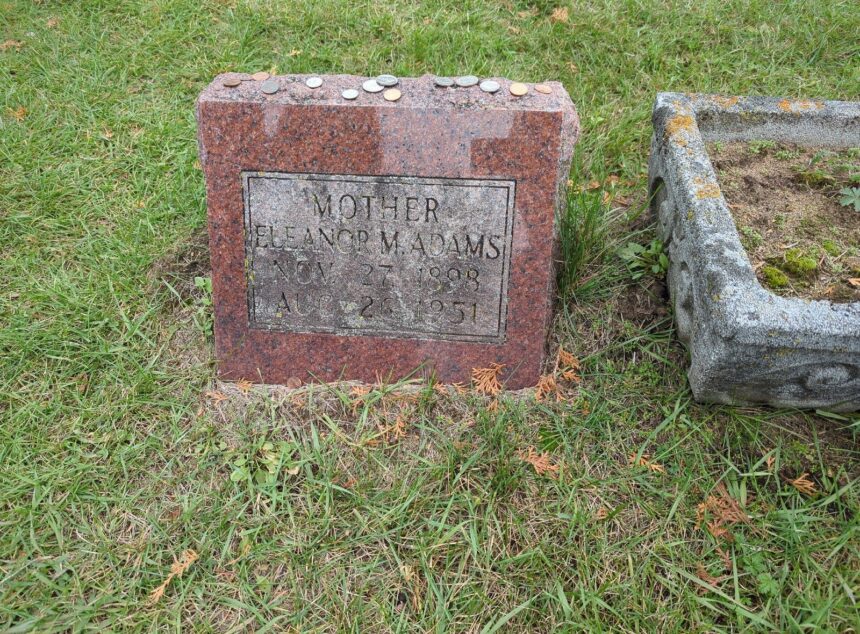Ed Gein’s Grave Robbing: The Hard Evidence
Ed Gein is remembered for the murders of Bernice Worden and Mary Hogan, but the killings were only part of his story. What truly horrified the public in 1957 was the revelation that Gein had spent years slipping into local cemeteries at night, digging up freshly buried bodies, and hauling them back to his farmhouse. Unlike many of the rumors that have surrounded him ever since, this part of the case was tested in court and confirmed with physical evidence.
What Gein Admitted
When he was arrested on November 16, 1957, Gein began talking to investigators about his secret double life. He explained that sometime around 1947, two years after his mother’s death, he started prowling cemeteries at night.
He told officers he often felt as though he was in a “daze” when he made these trips. The targets were deliberate: recently buried, middle-aged women who reminded him of his mother, Augusta. Over the course of a decade, he claimed to have made dozens of visits. Most nights, he said, he left the cemetery empty-handed. Other times, he opened graves, taking either select body parts or, on occasion, an entire corpse. He admitted to carrying out at least nine successful exhumations.
Putting His Story to the Test
Authorities didn’t want to take Gein’s word alone. In December 1957, under court order, investigators exhumed three graves that Gein himself had identified. The results left little doubt.
- First grave: The coffin was completely empty, just as Gein had described.
- Second grave: The remains were disturbed, with bones scattered inside. Most damning of all, investigators found a crowbar Gein admitted leaving behind.
- Third grave: The casket showed obvious tampering, and large portions of the body were missing.
These findings mattered because they gave independent proof that Gein’s story was true. The crowbar discovery in particular tied him directly to the crime scene.
Cemeteries Around Plainfield
Not every cemetery Gein visited was publicly identified, though reports indicate he targeted at least three burial grounds in the Plainfield area. He seemed to monitor obituaries and funerals, waiting for the right kind of burial before making his move. It wasn’t random; it was methodical.
What He Brought Home
The farmhouse inventory left investigators stunned. Inside, they found human skulls that had been turned into bowls, masks cut from faces and scalps, clothing items stitched from skin, preserved organs, and, most infamously, a “woman suit” designed to be worn.
Gein himself insisted that he used the remains “just to look at.” TIME magazine reported at the time that investigators found no evidence of cannibalism or sexual activity with the bodies.
Why He Did It
Psychiatrists later concluded that the grave robbing stemmed from Gein’s breakdown after his mother’s death. He remained fixated on Augusta, and by exhuming women who resembled her, he could symbolically bring her back—or even try to become her.
Doctors diagnosed him with schizophrenia. His description of being in a trance-like state fit with dissociative episodes seen in severe mental illness.
Why He Wasn’t Tried for It
Even with such strong evidence, Gein was never formally charged with grave robbing. Prosecutors focused on murder because it carried the heaviest penalty. There were other complications, too: Sheriff Art Schley’s rough handling of Gein during questioning tainted some of his early confessions, and the courts spent years simply trying to decide whether he was fit to stand trial. Judge Robert Gollmar later admitted that cost also played a role—it would have been impractical to prosecute every single crime.
How Solid Was the Evidence?
Very. Unlike the speculation that swirls around other parts of the case, the grave robbing stood on firm ground:
- Court-ordered exhumations confirmed Gein’s descriptions.
- The crowbar linked him directly to one of the disturbed graves.
- The farmhouse contained physical evidence too detailed to ignore.
- And there was no logical reason for him to invent these confessions—they only deepened his legal jeopardy.
Timeline of the Cemetery Raids
- 1945: Augusta Gein dies; Ed closes off her rooms in the house.
- 1947: First reported grave robberies begin.
- 1947–1957: A decade of cemetery visits and exhumations.
- November 1957: Arrest and confession.
- December 1957: Authorities exhume three graves, confirming his account.
- 1957–1958: State crime lab catalogs the remains and household items recovered from the farm.
What We’ll Never Fully Know
Despite the evidence, gaps remain. Exactly how many graves he disturbed is still uncertain. Only three were ever checked. The full list of cemeteries has never been released, and families of the deceased were shielded from publicity. Some body parts found in the house were never matched to specific graves, and others may never be accounted for.
The revelations had a ripple effect beyond Plainfield. Cemeteries across Wisconsin tightened security, burials were made deeper, and caretakers became more vigilant about signs of tampering. On a cultural level, the case forced Americans to confront unsettling questions about mental illness, isolation, and what can happen when a disturbed person slips entirely out of view.
Gein’s grave robbing is one of the best-documented aspects of his life. Between his own detailed confessions, the exhumations that confirmed them, the objects found in his home, and the records preserved at the time, there’s little doubt that for ten years he was living a double life—quiet farmhand by day, grave thief by night.
If his murders showed violence, his grave robbing revealed obsession: an attempt to cling to the memory of his mother through women who looked like her. In some ways, it was this decade-long ritual of grave desecration, more than the murders themselves, that cemented his place as one of the most disturbing figures in American criminal history.


Leave a Reply